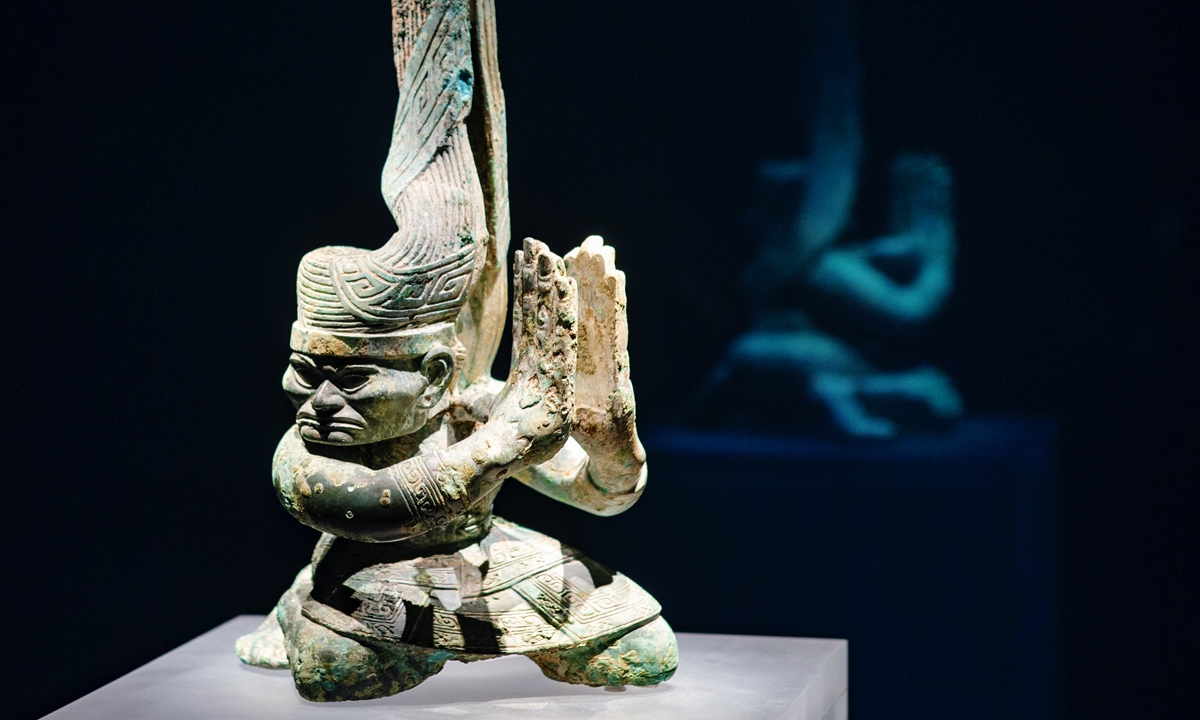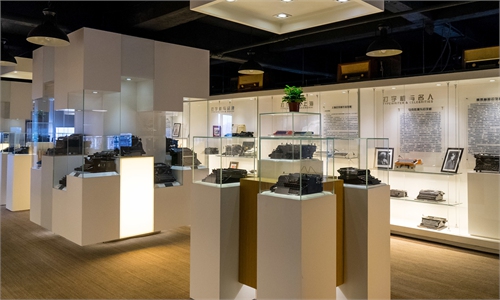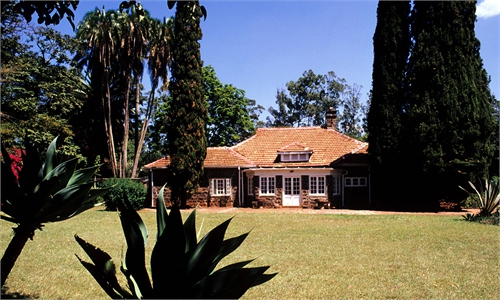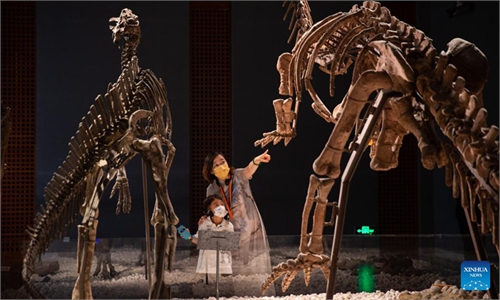
A statue in a kneeling position with its head turned on display at the Sichuan Museum in Chengdu, the capital of Southwest China's Sichuan Province, on September 28, 2021.Photo: VCG
From online AR museums to the birth of AI docents, museums in China are using a variety of online means to stay relevant today, especially amidst the COVID-19 pandemic. For insiders, the digital transformation in the post-pandemic era is not meant to replace the traditional museums, instead "it is an extension for museums to interact with the society."
As International Museum Day fell on Wednesday in 2022 , Chinese museums have chosen to livestream their collections to netizens. Museums, from small local county-level institutions to major national venues, covering subjects such as fossils, electronics and even the Chinese wheat history have been attracting millions of views online with these online events.
This is not a spur of the moment move. Museums have been slowly expanding online in recent years, a trend that has been further amplified by the COVID-19 pandemic. According to recent data from Chinese video platform Youku, museum-related programs on the platform have earned more than 80 million views in total as of April 2022.
Museum 'influencers'
In Central China's Henan Province, the largest region for grain farming in China since ancient times, the Wheatfield Museum livestreamed from a wheat field on Wednesday gave viewers an inside look into farming.
Like the Wheatfield Museum, other museums have turned to livestreaming to show off what makes them special.
The Mukden Palace in Northeast China's Liaoning Province for the first time demonstrated their traditional picture mounting technique to viewers, earning more than 200,000 views on China's Twitter-like Sina Weibo.
Apart from livestreaming, an AI museum docent named Wen Hehe developed by Art Exhibitions China has also debuted. According to the developer, Wen "will be able to provide services including guiding, hosting, and livestreaming" to customers.
"From online live broadcasts to the introduction of AI interpreters to 3D renders of famous cultural relics, the digitization of domestic museums has become an irreversible trend," Yang Xiaohua, co-founder of AR Museum, a company focusing on creating digital products based on traditional museums, told the Global Times.
Creative digitalization
Along with emerging streaming sessions, museum and art organizations in China have been trying their hand at providing creative digital products based on their collections.
To celebrate International Museum Day, the Nanyue King Mausoleum Museum in Guangzhou, Guangdong Province, plans to launch an online digital product collection on Thursday that combines NFTs (Non-Fungible Tokens) with digital techniques such as animation rendering to "digitalize" ancient Chinese relics such as the Horn-shaped Jade Cup of the Western Han Dynasty (206BC-AD25). The project is collaborated by four local museums together, and is sold 25 yuan($ ) online.
Local museums are not the only ones getting in on this new digital trend. Earlier in 2022, Beijing's National Museum of China offered four digital relic collections that sold out in less than a minute. By changing forms during the COVID-19, museums have been able to tap into their power, which is also the theme of International Museum Day 2022.
"Even though online and offline experiences can be very different, their contribution to world museum development is significant. This shows how museums, the embodiment of humanity, can timely respond to social changes and become more open and have more possibility," Wu Hongbin, an art veteran at the Renmin University of China, told the Global Times.
In coping with the social change that have taken place in the pandemic era, museums have managed to earn some new fans with their creative digitalization choices.
"Collecting digital cultural works shows us the perspective of young collectors. In the old days, people thought that only physical items have cultural value, but now we collect digital relics, which shows value lies in a new form. In other words, virtual collection has value," Maximum Yang, a 27-year-old collector, told the Global Times.
People like Yang have also given opportunities to digital content creators. Xundong, a musician and illustrator in Chengdu, Sichuan Province, told the Global Times that the pop art-style 3D illustrations of the relics found at the Sanxingdui ruins site have been attracting young buyers and other Chinese creators seeking to collaborate in the digital field.
"The digitalization of museums is definitely a future direction of the industry," He Guiyan, an art critic who plans to launch an online museum tour on International Museum Day, told the Global Times.
"There is no conflict between the online and offline visiting forms, on the contrary, the online digital exhibition can be beneficial to the physical museums, attracting more visitors for them when the COVID-19 situation gets better," Yang Xiaohua said.
Yang, the young collector also told the Global Times that in order to promote the museum culture among young audiences, cultural organizations should "break their convention, and to think what young people likes about."
The "star power" that the Luoyang Museum recently used in their promotions is a good example. It hired hot idol Wang Yibo, who has nearly 40 million followers on Sina Weibo, to be a spokesperson for Luoyang's history and culture. These related topics have now earned more than 200 million views on Sina Weibo.



